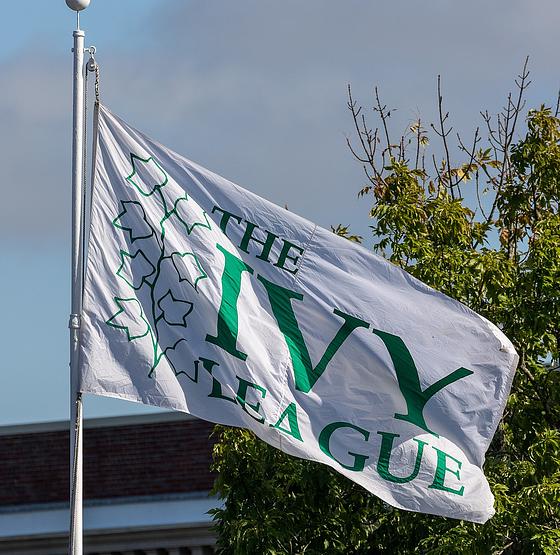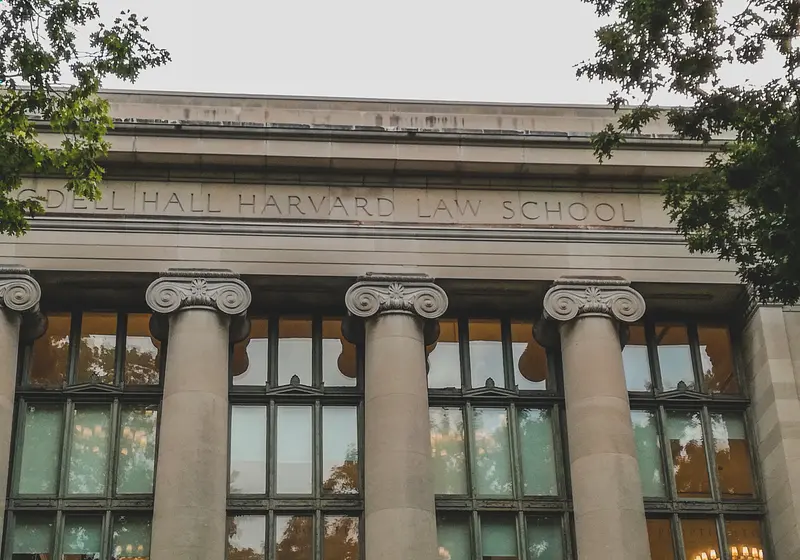I'm sure everyone has heard of the term "Ivy League" before. But what does it truly mean? If you ask the countless number of aspiring students and people around, you would think that "The Ivy League" is associated with elitism, prestige, tradition, power, and being "the best of the best." Heck!
It's even associated with getting the best education in America! These rumors are only partially true (to some extent). However…the Ivy League actually comes from more humble roots than the extravagant reputation it's garnered now.
History
The Ivy League comprises eight universities: Yale, Harvard, Princeton, Columbia, Cornell, University of Pennsylvania, Dartmouth, and Brown. The term "Ivy League" dates back to 1954, when the NCAA athletic conference for Division I was formed. Back then, their prestige didn't come from who had the best alumni network and donated the most but stemmed from sports such as football and basketball. Even though the name has recently gained popularity, it's important to note that these eight universities have a rich history going back as early as the 1600s.

Two New York Herald sports writers, Caswell Adams, and Stanley Woodward, coined the name. It was initially used as a phrase in the 1933 article referring to these schools as "Ivy Colleges." Caswell Adams used the term again during the football game coverage between Columbia and Penn. Caswell was a Fordham alumnus who showed great pride for his school to the point where the word "Ivy-Covered" was used as an insult toward the match.
Fordham (at the time) was a massive football powerhouse, so imagine Adams' disappointment when he didn't get to cover his Alma mater. But hey! All publicity is good publicity! Note: The origin of the term and its adoption to shape the brand we know today is still a subject of ongoing debate and speculation.
Back in the day, the Ivies mainly consisted of wealthy colonial men studying for law or church careers. They would study rhetoric, mathematics, and Latin, with the students held to a stricter standard back then. In current times, students would face probation or even expulsion.
But in the 1600s to early 1700s, they administered ear boxing and public whippings to those who stepped out of line. Harvard even went as far as to implement a fee for those who swore or brought alcohol on campus.
The diversity many of these schools brag about now was nonexistent for centuries. The student body primarily consisted of those who were white, rich, and male. While things have drastically changed from the 1900s-prior, privileged students make up a large percentage of Ivy League alums/attendees. Many of the Ivies did not even admit women until the 1960s -1970s.
Now that we've gone through the history of how the Ivy League came to be, here is a list of the eight schools and their own individual histories.
Harvard
Harvard…. Do we really need an introduction? The school that most people dream of attending and the school that also has the largest donation size.
Harvard is the oldest and one of the most reputable universities in the country. It was founded on September 8, 1636, by a vote by the Great and General Court of the Massachusetts Bay Colony. It was named after one of its first beneficiaries, John Harvard. Located in Cambridge, Massachusetts, Harvard educated 8 U.S. presidents and has 1 undergraduate college (Harvard College) along with 12 other graduate schools.
Yale
Ah! Rory Gilmore's Alma mater! Harvard's direct competitor.
Yale was born later on in 1701 alongside the founding of the New Haven Colony in 1638 by a band of 500 Puritans who fled from persecution in Anglican England. It was named in honor of a Welsh merchant, Elihu Yale, for donating 417 books, a portrait of King George I, and proceeds from sales that he made. Yale made history by being the first institution to offer graduate degrees which UPenn, Harvard, and Princeton followed shortly afterward. Yale offers 14 graduate/professional programs, with its Graduate School of Arts & Sciences having M.A., M.S., M.Phil., and Ph.D. degrees in 73 departments and programs. Yale is infamously known for their extensive library, which is the topic of jealousy. Offering 4 million volumes, they have an extreme security measure if a fire occurs where they have a fire suppression system that sucks the oxygen out of the surrounding area to avoid destroying any of these valuable books. They also have a better dining hall. (Sorry, Harvard! 😅)
University of Pennsylvania
In Philadelphia, most people think of Philly cheesesteaks and roast pork sandwiches, but behind it is a rich history with a history-filled School that lies in the middle. The University of Pennsylvania was originally founded in 1740 as a charity school, primarily due to Benjamin Franklin's help.
Commonly known as "UPenn" or "Penn" (Not to be confused with Penn State), UPenn is home to many notable alumni/students such as John Legend, Elon Musk, and our favorite Stranger Things star, Noah Schnapp! Famously known for its cutting-edge business school Wharton, UPenn has 12 schools in total, including its law and medicine programs.
Princeton
Devi Vishwakumar's dream school or the missing piece to the holy trinity (HYP), whichever name you decide to adopt, Princeton is notorious in many ways. Chartered in 1746, it was known as the College of New Jersey until 1896, before adopting the name "Princeton" after relocating to its new hometown in Princeton, NJ. Princeton is the 4th oldest school in the U.S. and achieved University status the same year that it decided to relocate.
It has one of the highest graduation rates in the U.S., along with 100,000 works spread across various collections in the Princeton University Art Museum. Princeton is also the only Ivy League institution to have no graduate programs, entirely focusing all its attention on the undergraduate student body.
Columbia
The Ivy in the city, and the school that Blair Waldorf transferred to, have long enjoyed a prominent presence and reputation in the public eye. There's more to this school apart from its pretty light blue colors; Columbia University was founded in 1754 as King's College by the royal charter of King George II of England. It's the oldest institution in New York and was renamed Columbia College when it reopened in 1784 after the American Revolution.
It became Columbia University in 1912. It also was (unfortunately) the last Ivy institution to become co-ed in 1983. However, Columbia University is home to its sister school, Barnard College. Barnard was initially established as an all-girls educational powerhouse to its male counterpart. Once Columbia became co-ed, Barnard reached an agreement that resulted in a complicated relationship that allowed them to operate independently as a liberal arts college under the Columbia University name. Columbia uniquely is the only Ivy League institution to offer 4 undergraduate colleges (Columbia College, Barnard College, School of Engineering and Applied Sciences, and Columbia School of General Studies). Columbia's G.S. program was established for non-traditional students who have taken a year or more away from their education and want a more flexible environment despite their circumstances. Located in Morningside Heights, Columbia has its own environment that can't be replicated: an enclosed campus in the city. Despite the hustle and bustle occurring in the concrete jungle, Columbia's space offers a slightly more traditional campus experience than anyone would expect in the city. You can gain access to Harlem's rich culture and restaurants while also residing on the upper west side. Among the Ivy League universities, Columbia University boasts the largest graduate student population, encompassing 16 distinct graduate schools. Notably, their law, medicine, and education programs, including the renowned Teacher's College, shine as prominent pillars of academic excellence.
Brown
Known as the "happiest Ivy," Brown was founded on September 15, 1764. Nestled in the vibrant city of Providence, Rhode Island, Brown University stands as a testament to over two centuries of academic excellence and progressive thinking. Its storied history, dating back to its founding, weaves a captivating tale of intellectual curiosity and social activism.
From its early days as a Baptist institution to its transformation into a non-sectarian university, Brown has been at the forefront of championing liberal education and the pursuit of knowledge. Brown is notorious for its open curriculum that gives students the opportunity and flexibility to complete coursework in a variety of fields of study without general core requirements. A grading system without grade point averages or class rankings. The option to take any course for a letter grade or satisfactory/no credit. Brown offers the power for students to chart their own academic course.
Dartmouth
People call this school the "party/frat Ivy," home to a large Greek life scene and major parties on the weekend (and weekdays). Dartmouth is located in Hanover, New Hampshire, and ironically was founded by Yale graduate Eleazar Wheelock in 1769. Eleazar Wheelock was previously an American Congregational minister, orator, and educator in Connecticut before moving to New Hampshire to establish a school meant to train Native Americans as Christian Missionaries, which later became known as Dartmouth in honor of William Legge, the Earl of Dartmouth, a friend of John Wentworth's and a critical benefactor.
John Wentworth, an American residing in England, was a crucial piece in the founding of Dartmouth by securing the land and signing the charter for Dartmouth College. Despite not being mentioned as much as the other Ivies, Dartmouth still has many opportunities to offer, such as 4 different graduate programs.
Cornell
The youngest Ivy League institution or better referred to as the "baby of the family." Like the youngest sibling, Cornell often is the butt of jokes when it comes to their older Ivy League counterparts. Founded on April 27, 1865, Cornell is the last institution to complete the band of Ivy schools. However, Cornell does have something over the other Ivy schools: They were the first institution to admit women since its enactment in March 1872.
Even before they officially began admitting, it was stated that women would attend classes despite not being enrolled students. Cornell is also unique because despite classifying itself as a private Ivy League institution, some schools and land grants come from SUNY (State University of New York) funding. It was initially under the Morrill Act of 1862 (A law passed that set land aside to create colleges that "benefited the agricultural and mechanical arts.”) This institution resides in Ithaca, NY, where it acknowledges its land coming from the Cayuga Nation. It was founded by Ezra Cornell and Andrew Dickson White, with their unique study of agriculture, along with many other specializations, continues to attract students to this day.
Final Piece of Advice…
After reading this article, you're probably left with one question: How do I get into these schools??? There's no one size fits all for an acceptance letter. You could have the perfect GPA, spectacular extracurriculars, and fantastic charisma but still face rejection. This isn't meant to discourage you, but it's meant to show that college admissions can be random, and even if you don't get into Ivies, wherever you end up will be lucky to have you and that you'll do amazing things.
But for now, whether you're already in college or you're merely a freshman in high school, I hope you've enjoyed learning more about the Ivy League. If you could go to any of these ivies, which one would you choose and why? Please feel free to discuss your answers in the comments!




